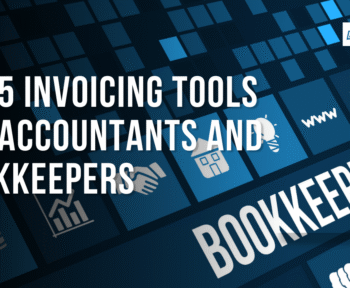Starting a new business is an exciting journey, but amidst the hustle of product development, marketing, and sales, it’s easy for essential financial tasks to fall by the wayside. Don’t let that happen! A robust financial foundation is critical for long-term success. This detailed bookkeeping checklist is your essential guide to setting up sound financial practices from day one, ensuring your new business accounting is on point.
Why a Bookkeeping Checklist is Non-Negotiable for Your Startup

Think of your bookkeeping checklist as the blueprint for your financial health. Without it, you’re navigating uncharted waters, prone to errors that could lead to cash flow problems, tax issues, and missed opportunities. For startups, mastering bookkeeping for startups early on means better decision-making, easier tax season, and a clearer picture of your profitability.
Did You Know? Small businesses that maintain accurate financial records are significantly more likely to succeed and secure funding from investors or lenders.
Phase 1: Pre-Launch Financial Setup – Laying the Groundwork
Before you even make your first sale, there are crucial steps to take for your financial setup.
1. Establish Your Business Legal Structure
Your legal structure (sole proprietorship, partnership, LLC, S-Corp, C-Corp) dictates your tax obligations and liability. This is the first step in new business accounting.
- Sole Proprietorship: Easiest to set up, but no personal liability protection.
- Partnership: Similar to sole proprietorship but with multiple owners.
- Limited Liability Company (LLC): Offers personal liability protection; flexible taxation.
- S-Corporation (S-Corp): Avoids double taxation of C-Corps; strict IRS requirements.
- C-Corporation (C-Corp): Separate legal entity; potential for double taxation but good for raising capital.
2. Obtain Necessary IDs and Permits
- Employer Identification Number (EIN): Even if you don’t plan to hire employees immediately, an EIN is crucial for opening a business bank account and filing taxes. It’s like a social security number for your business.
- State and Local Licenses/Permits: Research and secure all required business licenses, permits, and certifications for your industry and location.
3. Open a Dedicated Business Bank Account
This is a fundamental step for bookkeeping for startups. Never co-mingle personal and business finances.
- Benefits: Simplifies expense tracking, makes tax preparation easier, and provides a professional image.
- Action: Research banks, compare fees and services, and open checking and savings accounts in your business name.
4. Set Up a Business Credit Card (Optional, but Recommended)
A dedicated business credit card can help build business credit, track expenses, and provide a buffer for cash flow.
- Action: Research cards with favorable terms, rewards, and low annual fees. Use it responsibly to avoid debt.
5. Choose Your Accounting Method: Cash vs. Accrual
Understanding these methods is key to effective new business accounting.
| Feature | Cash Basis Accounting | Accrual Basis Accounting |
| When Revenue is Recorded | When money is received | When it is earned (even if not yet paid) |
| When Expenses are Recorded | When money is paid | When they are incurred (even if not yet paid) |
| Complexity | Simpler, often used by small businesses/startups | More complex, provides a clearer financial picture |
| Reporting | Less accurate for long-term financial health | Complies with GAAP (Generally Accepted Accounting Principles) |
Export to Sheets
- Recommendation: Most small businesses start with cash basis due to its simplicity, but accrual basis provides a more accurate view of financial performance, especially as you grow. Consult with an accountant to determine the best fit for your business.
Also Read: What is Accounting? Comprehensive Guide to Accounting Principles, Types, and Methods
Phase 2: Ongoing Bookkeeping Essentials – The Daily Financial Discipline
Once your initial setup is complete, consistent daily, weekly, and monthly tasks become crucial for maintaining your bookkeeping checklist.
1. Select Accounting Software
This is the cornerstone of modern bookkeeping for startups. Ditch the spreadsheets as soon as you can.
- Options: QuickBooks Online, Xero, FreshBooks, Zoho Books, Wave Accounting (free option).
- Considerations: Ease of use, features (invoicing, expense tracking, payroll integration), scalability, and pricing.
- Action: Research, choose, and set up your accounting software. Integrate your business bank account and credit cards.
2. Record All Transactions (Income & Expenses)
This is the core of your bookkeeping checklist. Every single transaction needs to be logged.
- Income: Record all sales, service revenue, and other money received. Include details like customer name, invoice number, and date.
- Expenses: Track every outgoing payment. Categorize them appropriately (e.g., office supplies, marketing, rent, utilities). Keep receipts!
- Tools: Use your accounting software’s features to automatically import transactions from bank feeds, or manually enter them.
3. Categorize Transactions Accurately
Proper categorization is vital for understanding where your money is going and for tax purposes.
- Create a Chart of Accounts: Your accounting software will have a default, but customize it to fit your business. This is your list of all financial accounts (assets, liabilities, equity, revenue, expenses).
- Consistency is Key: Use the same categories for similar expenses every time.
Did You Know? Misclassifying expenses is a common audit trigger for new businesses.
4. Reconcile Bank and Credit Card Accounts
This monthly task on your bookkeeping checklist ensures accuracy.
- Process: Compare your bank and credit card statements with the transactions recorded in your accounting software.
- Purpose: Identifies discrepancies, forgotten transactions, or errors. Ensures your books match your actual cash flow.
- Frequency: At least monthly.
5. Manage Accounts Receivable (Money Owed to You)
- Invoicing: Create and send professional invoices promptly with clear payment terms.
- Follow-Up: Develop a system for following up on overdue invoices.
- Tracking: Use your accounting software to track outstanding invoices.
6. Manage Accounts Payable (Money You Owe)
- Bill Tracking: Keep a record of all bills you need to pay.
- Payment Schedule: Set up a system for timely bill payments to avoid late fees and maintain good vendor relationships.
- Budgeting: Align your accounts payable with your cash flow projections.
7. Maintain Petty Cash (If Applicable)
- For small, incidental expenses, maintain a petty cash fund and keep a detailed log of all disbursements.
- Replenish: Replenish the fund regularly and reconcile it with the log.
Phase 3: Periodic Financial Review & Compliance – Staying Compliant and Strategic
Beyond daily tasks, certain periodic reviews are essential for robust financial setup and new business accounting.
1. Process Payroll (If You Have Employees)
- Payroll Service: Consider using a payroll service (e.g., Gusto, ADP, QuickBooks Payroll) to ensure accurate tax calculations and timely payments.
- Employee Records: Maintain accurate employee records, including W-4s, I-9s, and direct deposit information.
- Tax Compliance: Understand and comply with all federal, state, and local payroll tax regulations.
2. Track Inventory (If Applicable)
- Inventory System: Implement a system to track inventory levels, costs, and sales.
- Regular Counts: Conduct regular physical inventory counts to reconcile with your records.
- Cost of Goods Sold (COGS): Accurately calculate COGS for financial reporting.
3. Review Financial Statements (Monthly/Quarterly)
Your accounting software can generate these reports. Regularly review them to gauge your business’s health.
- Profit & Loss Statement (Income Statement): Shows your revenue, expenses, and net profit/loss over a period.
- Balance Sheet: Provides a snapshot of your assets, liabilities, and owner’s equity at a specific point in time.
- Cash Flow Statement: Shows the movement of cash into and out of your business.
- Action: Analyze trends, identify areas for improvement, and make informed business decisions.
4. Estimate and Pay Quarterly Taxes
For many small businesses, taxes aren’t just an annual event.
- Federal and State Estimated Taxes: Understand your estimated tax obligations and make timely payments to avoid penalties.
- Sales Tax: If your business sells taxable goods or services, collect and remit sales tax according to state regulations.
5. Back Up Your Financial Data
- Regular Backups: Regularly back up your accounting software data. Cloud-based solutions often do this automatically, but confirm.
- Secure Storage: Store backups in a secure, offsite location.
6. Annual Tax Preparation and Filing
- Organize Records: Gather all financial records, receipts, and statements for the tax year.
- Consult a Professional: Work with a qualified tax accountant to prepare and file your business tax returns. This is invaluable for navigating complex tax laws and maximizing deductions.
Final Word: Your Bookkeeping Checklist is Your Business’s Backbone
Establishing and diligently following this bookkeeping checklist is not just about compliance; it’s about empowerment. It gives you clarity, control, and confidence in your financial decisions. By mastering new business accounting and implementing effective bookkeeping for startups from the outset, you lay a solid foundation for sustainable growth and long-term success. Don’t underestimate its power – your future self (and your accountant) will thank you.
References & Further Reading
- U.S. Small Business Administration (SBA): Provides extensive resources on starting and managing a business, including financial management. www.sba.gov
- Internal Revenue Service (IRS): Essential for understanding tax obligations for businesses. www.irs.gov
- Entrepreneur.com: Offers articles and guides on various business topics, including bookkeeping.
- Investopedia: Comprehensive financial dictionary and educational resources.
- Major Accounting Software Websites (QuickBooks, Xero, etc.): Often provide free guides and tutorials on bookkeeping basics.




